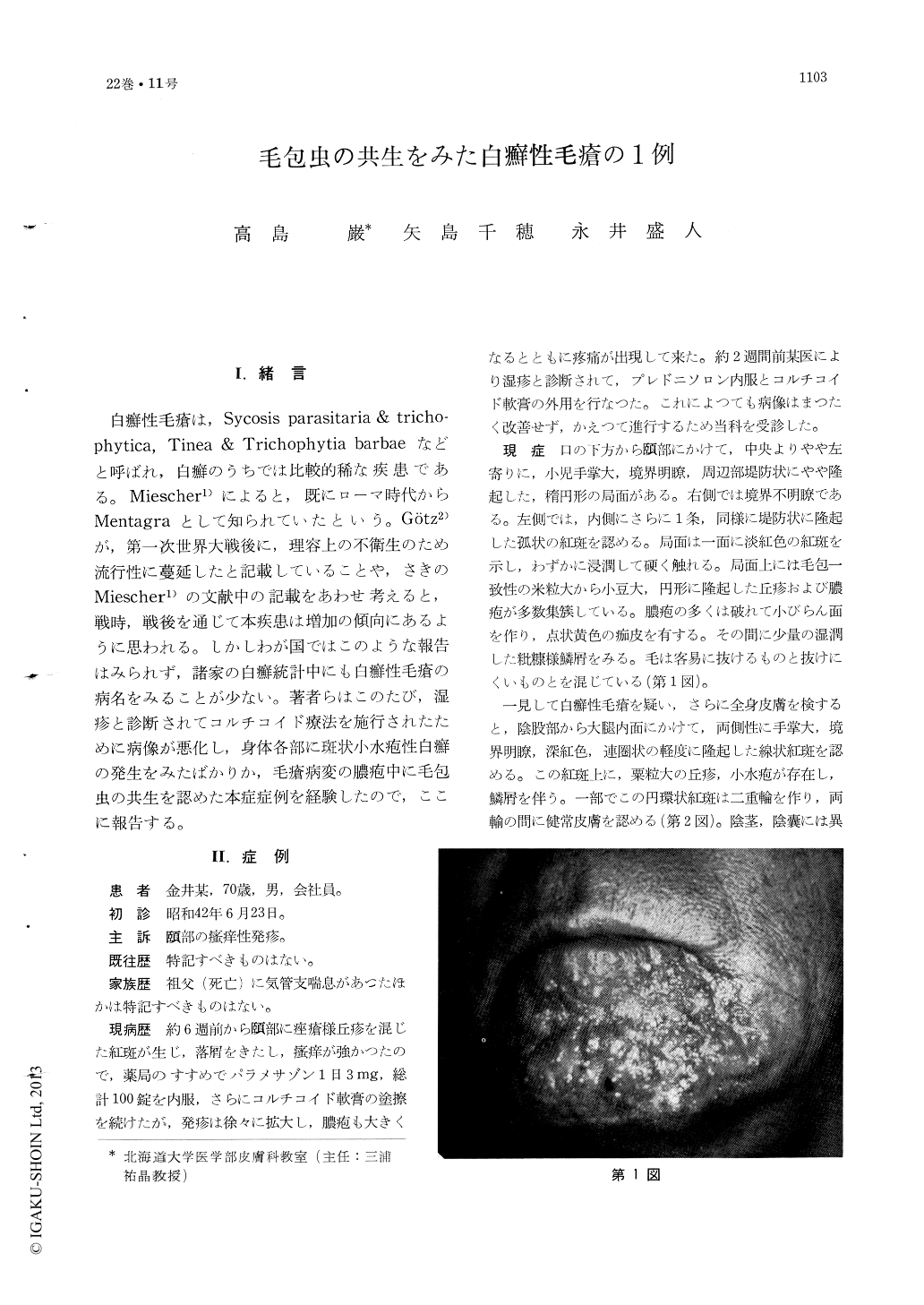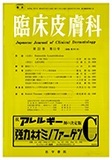Japanese
English
- 有料閲覧
- Abstract 文献概要
- 1ページ目 Look Inside
I.緒言
白癬性毛瘡は,Sycosis parasitaria & tricho-phytica, Tinea & Trichophytia barbaeなどと呼ばれ,白癬のうちでは比較的稀な疾患である。Miescher1)によると,既にローマ時代からMentagraとして知られていたという。Götz2)が,第一次世界大戦後に,理容上の不衛生のため流行性に蔓延したと記載していることや,さきのMiescher1)の文献中の記載をあわせ考えると,戦時,戦後を通じて本疾患は増加の傾向にあるように思われる。しかしわが国ではこのような報告はみられず,諸家の白癬統計中にも白癬性毛瘡の病名をみることが少ない。著者らはこのたび,湿疹と診断されてコルチコイド療法を施行されたために病像が悪化し,身体各部に斑状小水疱性白癬の発生をみたばかりか,毛瘡病変の膿疱中に毛包虫の共生を認めた本症症例を経験したので,ここに報告する。
A 70-year-old man had had acneiform eruption on the mental region since 6 weeks, which became worse after the systemic and topical steroid therapy. He also developed tinea on the chin, genito-femoral region, inner aspects of thighs, and back of the feet.
Many fungus elements were found in all lesions. On the mental region fungus was positive in the pus as well as in the scale.
They were cured after 2 months by the topical application of Haloprogin ointment and systemic administration of griseofulvin.
Although sycosis trichophytica had been rather rare dermatosis in Japan, it had become rather common recently. One of the cause of increased fungus infection or aggravation of its symptomes might be abuse of steroids.
In this case sycosis trichophytica might have showed acute inflammatory reaction by the superinfection of demodex folliculorum.

Copyright © 1968, Igaku-Shoin Ltd. All rights reserved.


